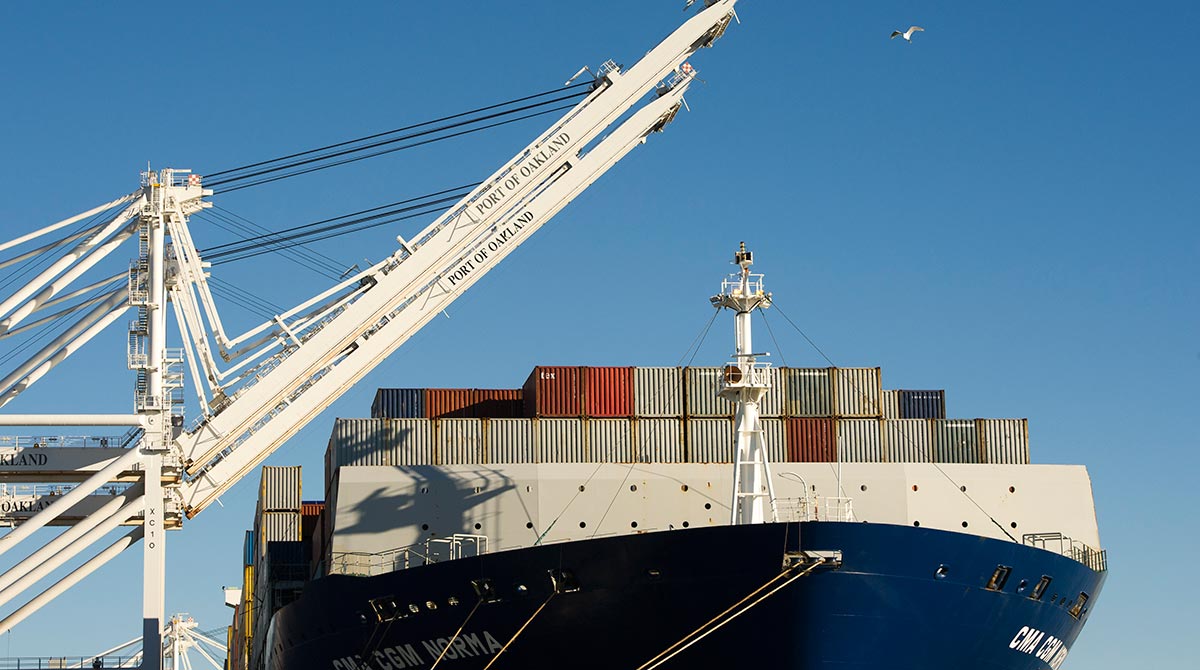Peak Shipping Season Results in Record-Breaking Month for Ports

The peak of shipping season in August produced record-breaking results for almost all of the top ports across the United States, covering the period before Hanjin Shipping Co. filed for bankruptcy protection Aug. 31.
The Port of Los Angeles, the largest in the country based on volume, reported that August was its strongest month since 2006 and the second-busiest month in the port’s 109-year history. Total imports increased 0.9% to 411,366 industry-standard 20-foot-equivalent units, or TEUs. Exports increased 6.3% year-over-year to 153,005 TEUs. Overall total loaded-container volume grew 2.3%, while empty containers increased 0.2% to 234,661 TEUs.
“Strong numbers on both our import and export cargo during the industry’s peak season indicates confidence in our ability to meet supply chain expectations,” Port of Los Angeles Executive Director Gene Seroka said.
RELATED: Hanjin’s stranded cargo begins to flow at US ports
At the Port of Long Beach, California, the second largest, exports jumped 14.8% to 159,247 TEUs, but imports dropped 8.9% to 321,625 compared with August 2015. Empties accounted for 160,157 containers, 22.5% fewer than last August.
So far in 2016, Long Beach terminals have moved 4.6 million TEUs, a 2.9% decline, while Los Angeles volume increased 4.3% to 5.6 million TEUs compared with the same eight-month period in 2015.
The port is the outlier among the major U.S. ports to post lackluster results.
The Georgia Ports Authority reports the Port of Savannah handled 330,846 TEUs, or about 2.62 million tons in August, an increase of 5% year-over-year. Savannah is the fourth-largest port in the United States.
“August container unit volumes were the third highest in the authority’s history, behind April and May 2015 at the height of diverted cargo from the West Coast,” GPA Executive Director Griff Lynch said. “Loaded imports continue to perform well, demonstrating a high level of diverted cargo retention.”
“The authority has started off the fiscal year on a strong footing, with positive year-over-year growth in both July and August,” said Jimmy Allgood, GPA’s chairman of the board. “Our volumes have exceeded previously forecasted levels but are in line with expectations for the balance of FY2017.”
The Port of Seattle and Tacoma posted the best August in four years, according to the Northwest Seaport Alliance. It reported terminals handled 118,481 imported TEUs, a 4% jump. Loaded export containers jumped 15% to 82,933 TEUs compared with August 2015.
However, year-over-year, total volumes at the fifth-largest port, including domestic containers, are relatively unchanged, at 2.32 million TEUs for the first eight months.
The Port of Oakland, California, reported weak import numbers, but a strong outcome on export containers. Total cargo volume, including imports, exports and empty containers, increased 1.7% year-over-year to 220,610 TEUs. Import volume fell 4.9% to 78,429 TEUs, but exports jumped 7% to 83,063 TEUs and the number of empty containers fell 10.6% to produce the overall positive results.
“We’ve had solid cargo production across the board,” said John Driscoll, the Port of Oakland’s maritime director. “But so far in 2016, exports are the star performers.”
The port tracks exports more closely because of the business from wine country in Northern California.
So far this year, total cargo volume in Oakland, the seventh-largest U.S. port, is up 4.6% to 1.58 million TEUs compared with the same eight-month period in 2015.
Earlier this month, Virginia Port Authority and South Carolina Ports Authority reported record results for August. The Port of Virginia, the nation’s sixth largest, handled 235,511 TEUs, a 7% jump. The Port of Charleston, ninth largest in the United States, handled 180,153 TEUs, a 5.6% increase year-over-year.
The Port of New York and New Jersey as well as Houston have not yet released results.

